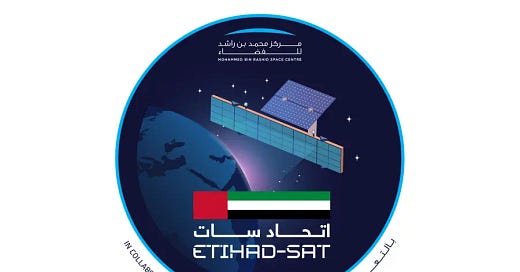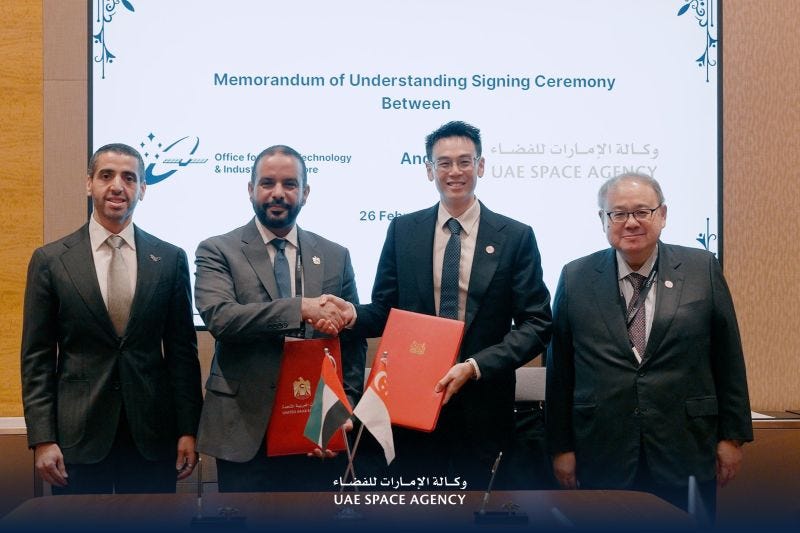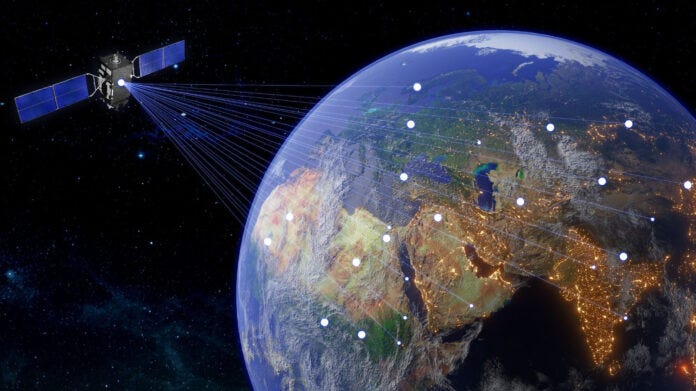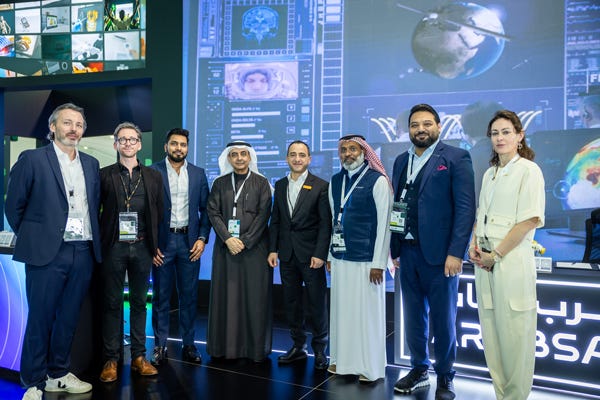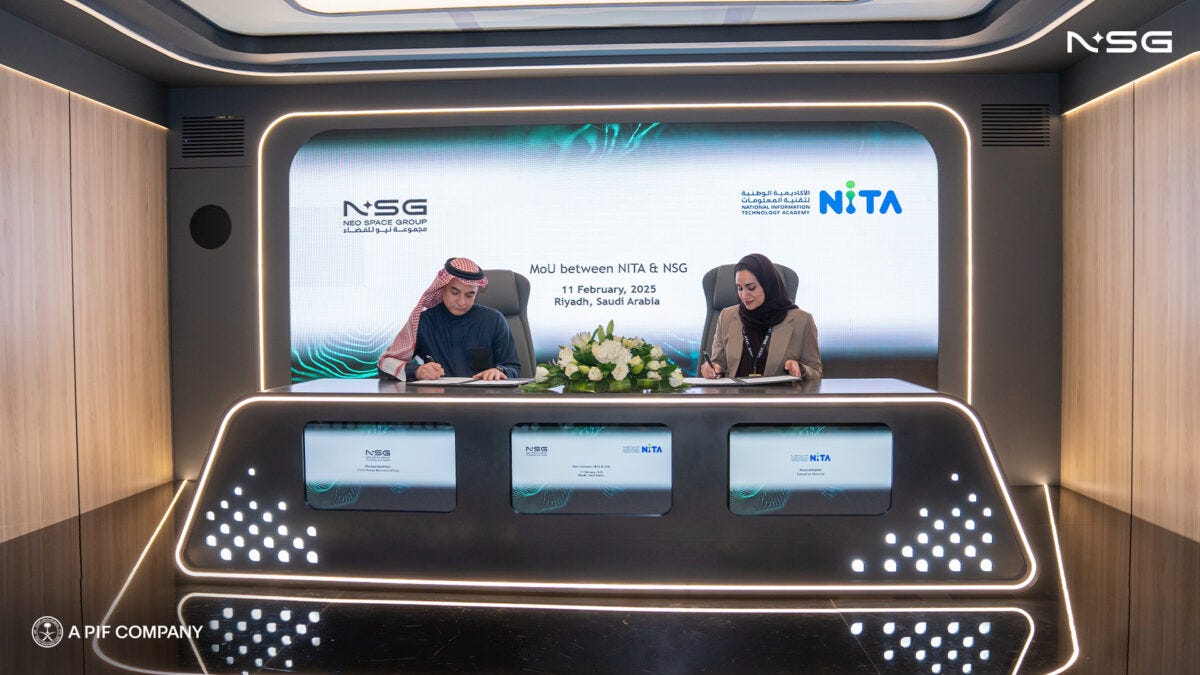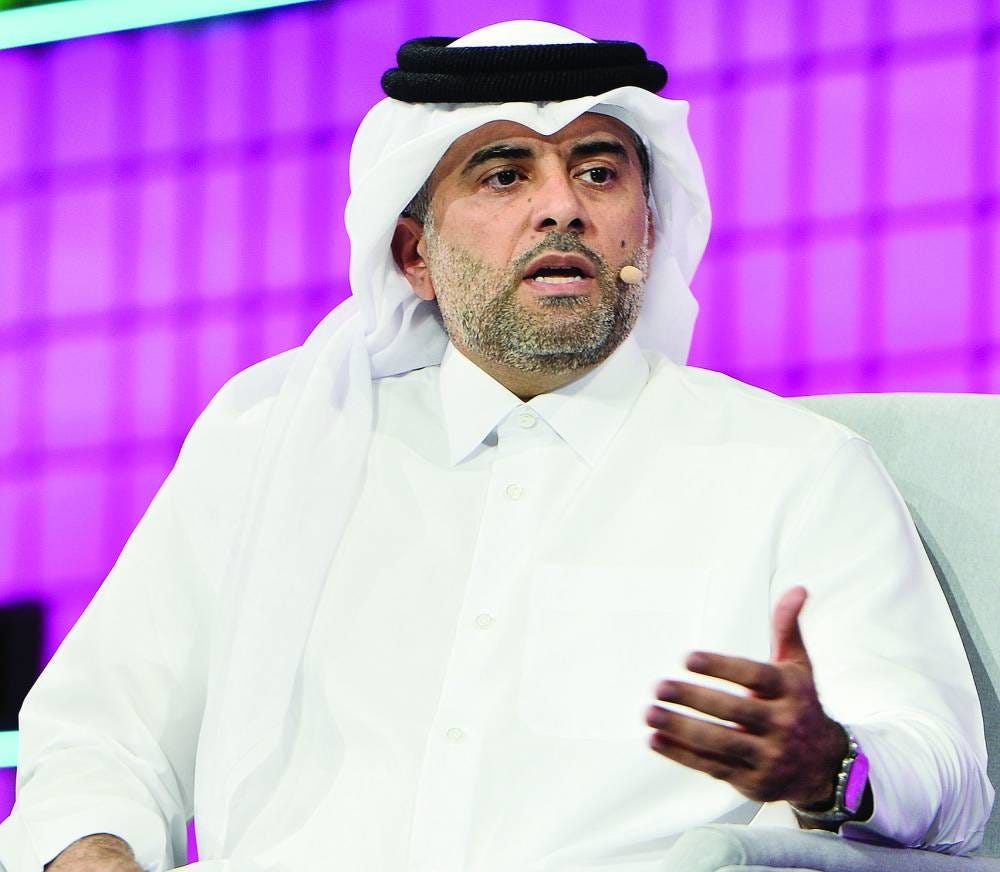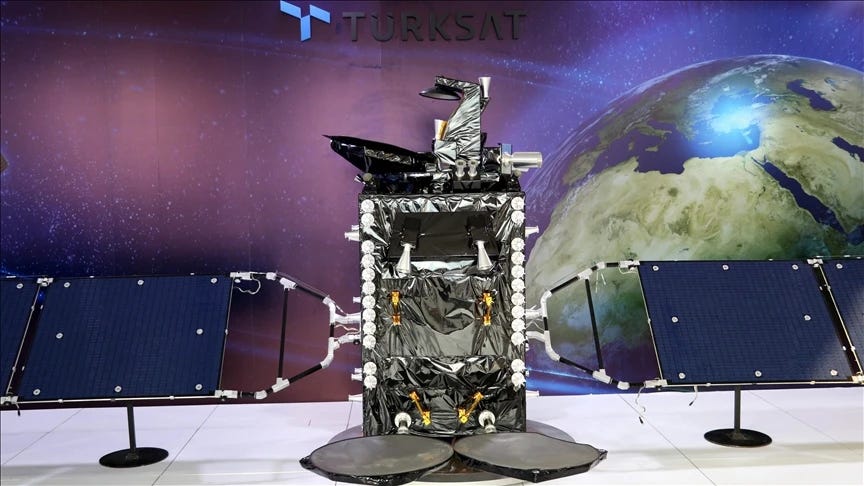Middle East Space Roundup: 24 February to 2 March 2025
A summary of all the space news in the Greater Middle East over the past week, brought to you by AzurX
The following are the major space developments in the Greater Middle East region tracked by Middle East Space Monitor over the past week:
UAE Space Developments
UAE’s MBRSC to Launch Etihad-SAT SAR Satellite in March 2025
The UAE is set to launch Etihad-Sat, its latest high-tech satellite, in early March 2025 aboard a launch vehicle from Vandenberg Space Force Base, marking a significant advancement in the country's growing space sector. Developed through a knowledge transfer partnership between the Mohammed bin Rashid Space Centre (MBRSC) and South Korea’s Satrec Initiative, Etihad-Sat is the UAE’s first satellite equipped with synthetic aperture radar (SAR) technology, enabling high-precision, all-weather Earth observation. The satellite offers three imaging modes—spot, scan, and strip—providing critical data for environmental monitoring, disaster response, and urban planning. This launch follows the January deployment of MBZ-Sat, the region’s most advanced Earth observation satellite, reinforcing the UAE’s leadership in space-based intelligence. The UAE’s expanding space portfolio underscores its ambition to drive innovation and strengthen its position as a global player in satellite technology and planetary exploration.
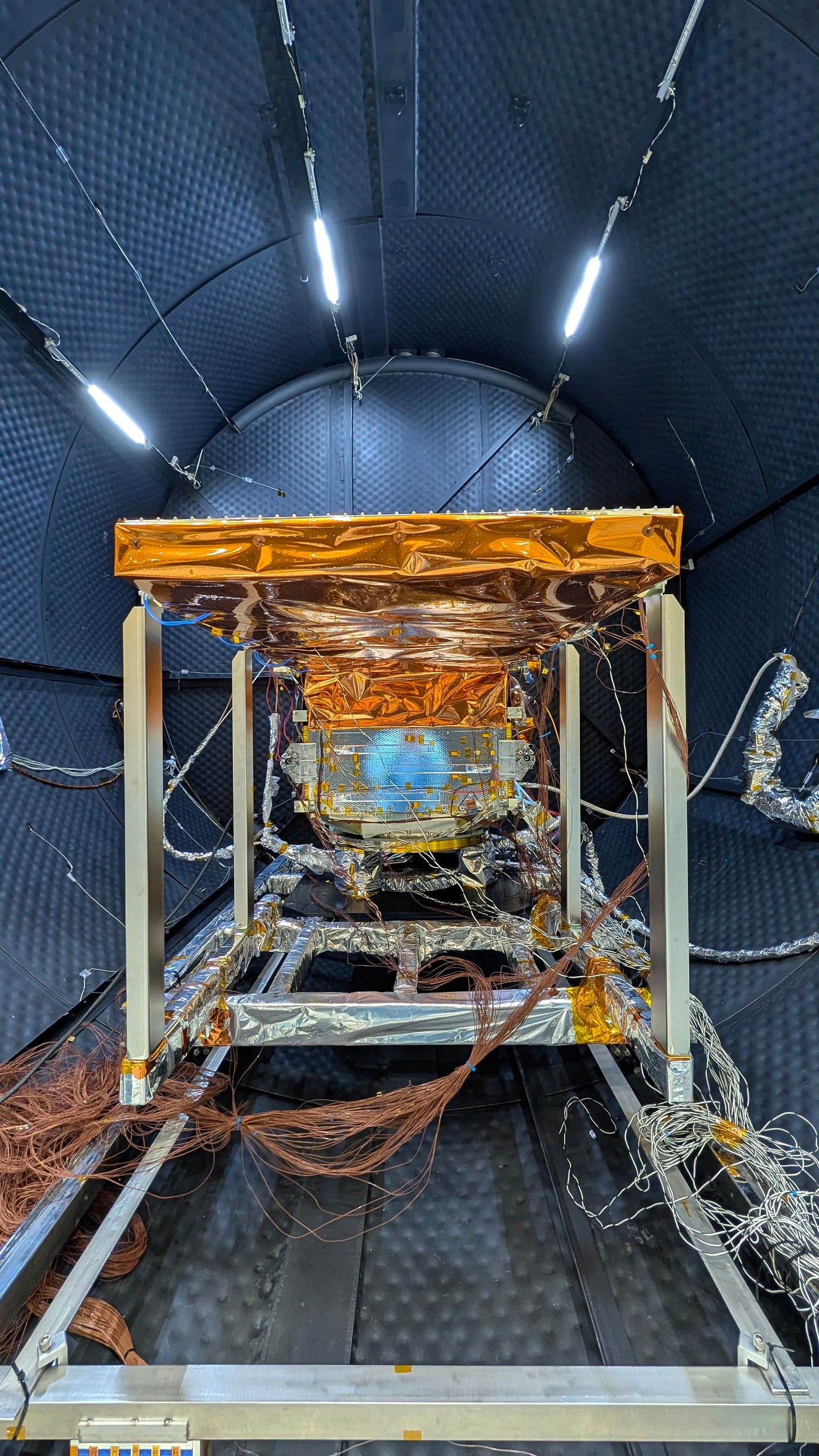
UAE and Italy Sign Landmark Space Cooperation Agreement
The UAE and Italy have strengthened their strategic partnership through a series of agreements and memoranda of understanding, including key advancements in space cooperation. Witnessed by UAE President Sheikh Mohammed bin Zayed Al Nahyan and Italian Prime Minister Giorgia Meloni during the UAE President’s state visit to Italy, these agreements span multiple sectors, including space, advanced technology, artificial intelligence, and scientific research. The space-focused collaboration was represented by Salem Al Marri, Director-General of the Mohammed Bin Rashid Space Centre (MBRSC), underscoring the UAE’s commitment to expanding its international space partnerships. This agreement aligns with the UAE’s broader ambitions in space exploration and technology development, reinforcing its role as a key player in global space initiatives. The partnership is expected to drive joint satellite projects, research collaborations, and technological advancements that will further integrate both countries into the expanding global space economy.
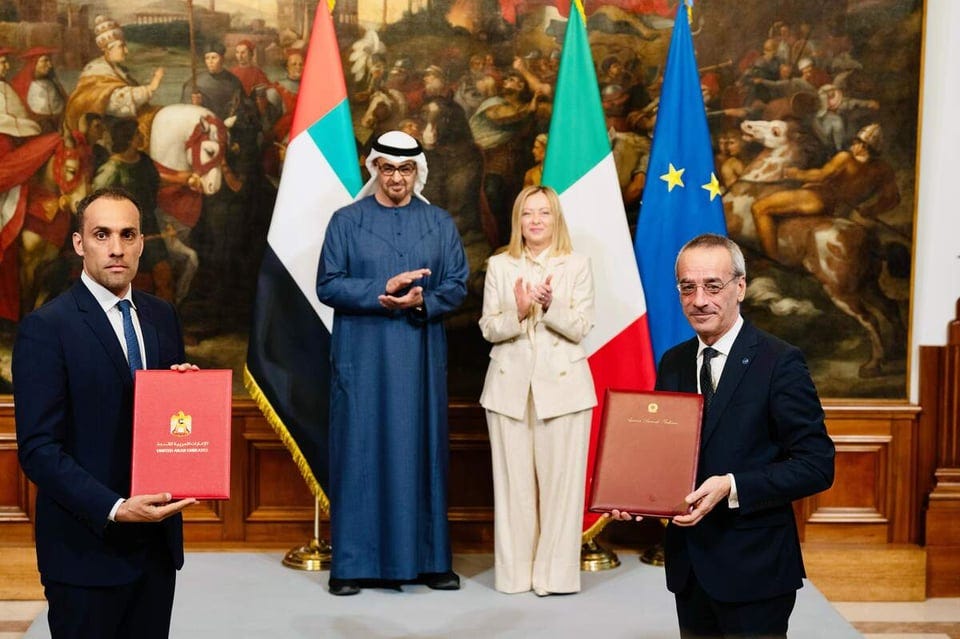
UAE-Italy Space Cooperation Centers on Lunar Exploration
The Mohammed Bin Rashid Space Center (MBRSC) has strengthened its international partnerships through multiple agreements advancing the UAE’s lunar ambitions. A memorandum of understanding was signed with the Italian Space Agency, focusing on cooperation in lunar exploration and the Emirates Lunar Mission, underscoring the UAE’s expanding role in deep-space activities. Additionally, MBRSC secured a strategic partnership with Thales Alenia Space for its involvement in NASA’s Lunar Gateway project, positioning the UAE to operate the station’s Pressure Equalisation Unit (airlock) for up to 15 years and paving the way for an Emirati astronaut to enter lunar orbit. This agreement solidifies the UAE’s role in the Artemis program, granting it priority access to scientific data and enhancing its long-term space exploration capabilities. Furthermore, MBRSC partnered with Tokyo-based SpaceData to develop digital twin solutions, creating a high-fidelity lunar simulation platform to improve mission planning and enhance Earth-based economic applications. These collaborations reflect the UAE’s commitment to integrating advanced technology and international expertise in its journey to establish a leading presence in space exploration.
UAE’s Emirates Mission to the Asteroids Passes CDR, Construction Begins
The UAE’s deep space ambitions have taken a major step forward with the final approval of the critical design review for its first asteroid exploration mission, allowing Emirati engineers to begin constructing the MBR Explorer spacecraft. Scheduled for launch in 2028 aboard a Japanese rocket, the 2,300kg spacecraft will undertake a five-billion-kilometer journey through the inner solar system, leveraging gravity assists from Venus and Mars to reach the asteroid belt between Mars and Jupiter. The probe will study six asteroids before attempting a landing on a seventh, Justitia, in 2035, a target of particular interest due to its unusual red hue, possibly indicating origins from the early solar system. The UAE Space Agency is collaborating with the University of Colorado Boulder, Arizona State University, and the Italian Space Agency, with Emirati engineers actively involved in the mission’s development in the U.S. The Technology Innovation Institute (TII) has been tasked with developing the lander, marking a significant push for private sector participation in the UAE’s expanding space program. This mission builds upon the UAE’s success with the Hope Probe and signals the country’s increasing role in planetary science and deep space exploration.

UAE’s MBRSC Hosts NASA’s Moon to Mars Architecture Workshop
The UAE’s Mohammed Bin Rashid Space Centre (MBRSC) hosted NASA’s Moon to Mars Architecture Workshop in Dubai, reinforcing the UAE’s role as a global hub for space collaboration. The event brought together key space agencies, including NASA, ESA, CNES, JAXA, and other international partners, to discuss strategies for advancing human exploration from the Moon to Mars. High-level discussions focused on capability gaps, lunar mobility, power infrastructure, and logistics for sustainable deep space missions. NASA provided updates on its Architecture Concept Review, outlining advancements and opportunities for cooperation. MBRSC officials emphasized the UAE’s commitment to strengthening global partnerships and driving scientific progress in space exploration. The workshop concluded with a collective commitment to enhancing mission readiness, technological innovation, and international collaboration to achieve long-term space exploration goals.
UAE and Singapore Sign Space Collaboration MoU
The UAE Space Agency and Singapore’s Office for Space Technology & Industry (OSTIn) have formalized their commitment to advancing space collaboration by signing a Memorandum of Understanding (MoU) on the sidelines of the Global Space Technology Conference and Exhibition (GSTCE). The agreement, signed by UAESA Director-General Salem Butti Salem Al Qubaisi and OSTIn Executive Director Jonathan Hung, establishes a framework for bilateral cooperation in space research and activities for peaceful purposes. This strategic partnership underscores the growing alignment between the UAE and Singapore in fostering innovation in space science, technology applications, and industry development. Key areas of collaboration include the promotion of the space sector, academic partnerships, and joint technological advancements, such as the UAE’s Sirb synthetic aperture radar (SAR) satellite program, recently reinforced by the ST Engineering-EDGE Group partnership. The MoU reflects both countries’ shared ambition to contribute to the global space ecosystem and leverage emerging opportunities for scientific and commercial advancements in satellite technology and space-based applications.
UAE’s Minister of Economy Committed to Expanding National Space Economy
At Investopia 2025 in Abu Dhabi, UAE Minister of Economy Abdullah bin Touq Al Marri highlighted the country's commitment to expanding its space economy as a key driver of sustainable growth and economic diversification. The UAE aims to increase the number of companies operating in the space sector, reinforcing its global leadership in this strategic industry. As part of its broader economic vision, the UAE continues to foster an investment-friendly environment for emerging industries, including space-based technologies, satellite communications, and geospatial intelligence. These efforts align with the country’s strategy to position itself as a hub for high-tech innovation and advanced digital economies. Additionally, the Minister emphasized the importance of the National Economic Register “NOMO” project in consolidating digital and knowledge-based economies, with cybersecurity and digital integration playing a crucial role in supporting space-sector enterprises. With proactive economic policies and a focus on technological advancements, the UAE is strengthening its resilience against global economic challenges while enhancing its competitiveness in the global space industry.
UAE’s Space42 Reports Strong 2024 Financial Results
Space42, the UAE-based AI-driven space technology firm, reported a strong financial performance in 2024, with an EBITDA of $317 million and a cash position exceeding $1.1 billion, reinforcing its strategic focus on Earth observation, satellite communications, and secure connectivity. The company launched its first synthetic aperture radar (SAR) satellite, Foresight-1, in partnership with ICEYE and plans to operationalize the system this year. A joint venture with ICEYE will establish SAR satellite manufacturing in the UAE, while a collaboration with FADA aims to build a fully integrated Earth observation ecosystem for government and commercial applications. In satellite communications, Space42 expanded its capabilities with the launch of the Thuraya-4 satellite, enhancing mobile satellite solutions, and is procuring two next-generation GEO satellites, Al Yah-4 and Al Yah-5, under a $5.1 billion contract with the UAE government. As a founding member of the Mobile Satellite Services Association, Space42 is leading the integration of terrestrial and non-terrestrial networks to scale connectivity solutions. Despite a 19% decline in revenue due to program execution delays, the company maintains a $7 billion revenue backlog, positioning itself for long-term growth in global space infrastructure.
Saudi Arabia Space News

Neo Space Group at SatShow 2025: Pioneering the Future of Satellite Technologies and Space Solutions
As the global space sector continues to evolve, few organizations are as poised to shape its future as Neo Space Group (NSG). At SatShow 2025 in Washington, D.C., from March 10-13, Saudi Arabia’s national space champion NSG will showcase its bold vision for the next generation of satellite technologies. The event, which has been a cornerstone of the industry for over 40 years, brings together leaders from government, military, telecommunications, and beyond - an influential platform for NSG to make its presence felt on the global stage.
Neo Space Group is currently at the forefront of the Kingdom’s ambitious space agenda, aligned with Vision 2030. Backed by the Public Investment Fund (PIF), the organization is driving growth across the region's space economy, advancing satellite communications, geospatial analytics, and positioning, navigation, and timing (PNT) services.
At SatShow 2025, NSG’s strategic participation underscores its leadership in forging powerful global partnerships to co-develop next-generation satellite solutions. The recent acquisition of UP42 strengthens NSG’s position in the geospatial and Earth observation sectors, creating new opportunities for innovative, data-driven services. Furthermore, NSG’s expanding portfolio of multi-orbit connectivity services, with confirmed partnerships with Thai Airways and Turkish Airlines, highlights its ability to provide scalable satellite infrastructure that supports industries from government to enterprise.
By driving commercial growth and unlocking new market access, NSG is setting the stage for the future of space technology. With a focus on international collaboration, NSG is positioning Saudi Arabia as a global hub for space innovation, ready to lead the way in the next chapter of space exploration.
SATELLITE 2025, also known as SatShow 2025, is scheduled to take place from March 10 to 13, 2025, at the Walter E. Washington Convention Center in Washington, D.C.
Saudi Arabia’s Aramco Digital Partners With OQ Technology for Satellite-IoT Services
The non-terrestrial network (NTN) sector for 5G-based Internet of Things (IoT) connectivity is gaining momentum with key industry developments. Luxembourg-based OQ Technology has partnered with Saudi Arabia’s Aramco Digital to integrate satellite IoT solutions into industrial operations across the energy, mining, logistics, and infrastructure sectors in the Middle East. This collaboration will leverage OQ Technology’s low-Earth orbit (LEO) narrowband IoT (NB-IoT) satellite network to enhance remote monitoring and automation, aligning with Aramco’s broader digitalization and sustainability goals. The partnership highlights the accelerating commercialization of NTN-IoT, with major industrial players integrating satellite-driven IoT to enhance operational efficiency and sustainability in remote and critical environments.
Saudi Arabia’s National Broadcaster Signs Long-Term Agreement With Arabsat
The Saudi Broadcasting Authority (SBA) has signed a long-term agreement with Arabsat to expand the global reach of Saudi TV channels, strengthening Saudi Arabia’s media presence across key markets. Announced during the FOMEX 2025 exhibition in Riyadh, the partnership enables Arabsat to broadcast Saudi channels via its satellites at 26°E and 30.5°E, along with the Arabsat-5C satellite at 20°E for African coverage. With robust signal strength, advanced anti-jamming technologies, and backup frequency capacity, the agreement ensures uninterrupted, high-quality broadcasting. SBA CEO Mohammed bin Fahd Al Harthi highlighted the collaboration’s role in sharing Saudi culture with international audiences, while Arabsat CEO Eng. Alhamedi Al Anezi emphasized the commitment to delivering premium satellite broadcasting services. This strategic alliance aligns with SBA’s broader vision of leveraging satellite infrastructure to amplify its regional and global presence, reinforcing Arabsat’s position as a leading satellite operator in the Arab world.
Saudi Arabia: Arabsat and Qvest to Develop Advanced OTT Streaming Platform
Arabsat, headquartered in Saudi Arabia, and Qvest have signed a Memorandum of Understanding at FOMEX 2025 in Riyadh to develop an advanced OTT streaming platform, marking a significant step in Arabsat’s digital transformation strategy. The partnership will enhance Arabsat’s direct-to-consumer services by leveraging Qvest’s expertise in cloud-based solutions, AI-driven content management, and scalable OTT infrastructure. The new platform will offer personalized recommendations, flexible monetization models, and white-label solutions for broadcasters and content providers. Additionally, Qvest will provide business consultancy and support Arabsat in forging strategic content partnerships. This collaboration aligns with Arabsat’s vision of integrating digital streaming with traditional satellite services, reinforcing its position as a key media distribution player in the Middle East and North Africa region.
Saudi Arabia: Arabsat Partners With Audimatic to Measure Satellite TV Audiences
Arabsat has also partnered with Audimatic to introduce real-time satellite audience measurement, addressing a long-standing gap in the Middle East’s broadcasting industry. By integrating Audimatic’s advanced analytics with Arabsat’s satellite services, the collaboration will provide broadcasters and content providers with precise viewer insights to optimize programming and audience engagement. Audimatic, an award-winning audience measurement tool endorsed by major regional players such as MBC’s Shahid, Saudi Broadcasting, and eVision, tracks real-time TV viewing data across satellite and IPTV platforms. Its successful deployment during the 2024 Paris Olympics demonstrated its ability to analyze Arab-speaking audiences' viewing habits. This partnership reinforces Arabsat’s commitment to enhancing media analytics and delivering data-driven solutions for the evolving broadcast landscape.
Saudi Arabia’s Neo Space Group Announces New Partnerships at LEAP 2025
At LEAP 2025 in Riyadh, Neo Space Group (NSG) reinforced Saudi Arabia’s expanding ambitions in the space sector, unveiling strategic partnerships and acquisitions that align with Vision 2030’s technological roadmap. NSG signed an agreement with OQ Technology to advance 5G Internet of Things (IoT) communications over low-Earth orbit (LEO) satellites, strengthening Saudi Arabia’s satellite infrastructure and fostering local expertise through specialized training. Additionally, NSG partnered with the National IT Academy (NITA) to drive talent development under the Space Academy initiative, enhancing space-related education and workforce readiness. The company’s acquisition of UP42 further expands its geospatial intelligence capabilities, providing access to Earth observation data and analytics from over 80 global providers. Key executives emphasized NSG’s business strategy of integrating acquisitions, partnerships, and in-house innovation to scale its commercial space ventures efficiently. Discussions also covered the growing role of LEO and geostationary (GEO) satellites in addressing global connectivity challenges, with NSG executives highlighting the increasing demand for satellite communications in industries such as energy, logistics, and aviation. The company’s presence at LEAP 2025 underscores Saudi Arabia’s commitment to positioning itself as a leader in commercial space technologies, with a focus on satellite-based IoT, geospatial intelligence, and sustainable satellite operations.
Israel Space Developments
Report: Israel’s IAI Reportedly Wins Vietnam Reconnaissance Satellite Deal
Israeli newspaper Ha’aretz reports that Israel Aerospace Industries (IAI) has secured a $680 million deal to supply Vietnam’s Military Intelligence with two advanced reconnaissance satellites, an optical imagery satellite and a synthetic aperture radar (SAR) satellite, marking a significant expansion of Vietnam’s space-based surveillance capabilities. The agreement, finalized after years of negotiations and competition from French and American defense firms, underscores Hanoi’s strategic response to escalating tensions with China in the South China Sea. While Vietnam has historically faced challenges in executing major defense contracts, the deal reflects its growing reliance on Israeli technology, building on a broader $2 billion defense procurement relationship between the two countries. The satellites, likely to be the OptSat 3000 model, will enhance Vietnam’s ability to monitor regional security threats, particularly China’s militarization of artificial islands and aggressive maneuvers in disputed waters. The agreement also highlights Israel’s expanding satellite export market, which has grown significantly over the past two decades, with major sales to Italy, India, Morocco, and Azerbaijan. As Vietnam continues to bolster its space-based intelligence and military capabilities, this deal marks a critical step in its national security and technological advancement strategy.
Israel’s Space Sector Requires Significant State Investment to Fulfil Potential
A recent briefing to Israel's Knesset Science and Technology Committee highlighted the significant economic potential of the country's space industry, with projections indicating a rise in its contribution to NIS 93 billion ($25.84 billion) by 2050, supporting 18,400 jobs. The Israel Space Agency (ISA) emphasized the need for clear government regulation and increased investment to accelerate industry growth, warning that without state support, progress would remain moderate. While private sector investment in Israel's space sector has grown by 21% annually, the country lags behind global leaders in government funding. The study also revealed that jobs in the space industry provide greater economic value than those in high-tech. The Defense Ministry stressed the sector’s strategic military importance, particularly in long-range operations. Meanwhile, the Beresheet-2 lunar mission, which aims for a double Moon landing and scientific research, is facing funding challenges exacerbated by recent conflicts. Unlike its predecessor, which was 95% privately funded, Beresheet-2 requires substantial government backing and international collaboration to proceed. To maximize Israel’s space potential, the report recommends increasing state investment, creating innovation zones for startups, and expanding global partnerships.
Israel’s Gilat Invests $3.5 Million In Drone Detection & Tracking Startup Crosense
Israel’s Gilat Satellite Networks has announced an investment of up to $3.5 million in Crosense, an early-stage startup developing advanced drone detection and tracking systems using electronically steered antenna (ESA) technology. This strategic move aligns with Gilat’s expanding focus on the Homeland Security and Defense sectors, reinforcing its commitment to next-generation security solutions. Crosense’s passive, all-weather system offers real-time, 24/7 coverage for securing critical infrastructure, airports, and military bases against unauthorized drone activity, addressing a growing security threat. Unlike traditional solutions, Crosense’s technology is designed for scalability and cost-effectiveness, particularly in complex urban environments. The investment round, co-led by Frontier Capital, underscores strong industry confidence in the startup’s disruptive capabilities. Gilat sees this partnership as an opportunity to integrate its expertise in satellite communications with Crosense’s innovative solutions, enhancing its global defense and government market offerings. Crosense CEO Gil Zwirn highlighted the value of Gilat’s global reach and technical expertise in accelerating the company’s development and market expansion.
Israel’s Spacecom Receives Approval to Provide OneWeb’s LEO SATCOM Services
Israel’s Spacecom, the operator of the AMOS satellite fleet, has received approval from Israel’s Ministry of Communications to provide low-Earth orbit (LEO) satellite services using Eutelsat’s OneWeb system. This approval enables Spacecom to expand its multi-orbit satellite communication strategy, offering high-speed, low-latency connectivity to businesses and government entities in Israel. CEO Dan Zajicek emphasized the critical role of LEO satellites in maintaining communication during emergencies when terrestrial infrastructure is compromised. With OneWeb’s 650-satellite constellation, Spacecom aims to enhance Israel’s connectivity landscape, ensuring resilient and seamless communication solutions while supporting efforts to bridge the digital divide.
Qatar Space News
Qatar Airways Advances Starlink In-Flight Connectivity Rollout
Qatar Airways is rapidly advancing its Starlink satellite internet rollout, with plans to equip all its wide-body aircraft with high-speed connectivity by the end of 2025. The airline has already installed Starlink on 50% of its Boeing 777 fleet—30 aircraft—just four months after launching the world’s first Starlink-enabled 777 flight. By streamlining the installation process, Qatar Airways has reduced installation time per aircraft from several days to just 9.5 hours, significantly accelerating its retrofit timeline. The airline is also set to be the first in the world to integrate Starlink on its Airbus A350 and Boeing 787 Dreamliner fleets, following extensive discussions with SpaceX, Boeing, and Airbus. CEO Badr Mohammed Al Meer emphasized that the initiative reflects Qatar Airways' commitment to delivering superior in-flight connectivity, ensuring passengers enjoy seamless internet access across more routes. With one of the fastest Starlink rollouts in the industry, Qatar Airways is setting new benchmarks for aviation connectivity, reinforcing its leadership in digital transformation within the airline sector.
Qatar’s Es’hailSat to Broadcast Three Channels for Jordan’s Roya Media Group
Jordan’s Roya Media Group (RMG) has expanded its regional footprint by launching its three flagship channels—Roya TV, Roya News, and Roya Kids—on Qatar’s Es’hailSat satellite at the 26° East orbital position, enhancing its reach across the Middle East and North Africa. This strategic move strengthens RMG’s presence in the competitive satellite broadcasting landscape, ensuring broader accessibility and an improved viewing experience. Roya TV continues to deliver high-quality entertainment, while Roya News remains committed to providing accurate, real-time reporting on regional and global developments. Roya Kids, meanwhile, maintains its focus on safe, educational programming for young audiences. The collaboration with Es’hailSat aligns with RMG’s mission to innovate in digital broadcasting, leveraging satellite technology to expand its audience. Es’hailSat’s CEO, Ali Ahmed Al Kuwari, highlighted the synergy between the two entities, emphasizing that the partnership enhances the diversity of content available on Es’hail-2. By joining Es’hailSat’s video distribution network, RMG solidifies its role as Jordan’s leading private media group, committed to delivering informative and engaging content while expanding its influence across the region’s satellite media market.
Darkocean Introduces Qatar’s Satellite-Derived Bathymetry AI Solution
Darkocean has introduced Qatar’s first locally developed Satellite-Derived Bathymetry (SDB) solution, leveraging a proprietary AI and deep learning model tailored to the Middle East’s unique marine conditions. This breakthrough eliminates the reliance on costly vessel-based surveys by extracting high-resolution seabed data from satellite imagery with unprecedented accuracy. Unlike conventional SDB solutions that depend on foreign-developed algorithms, Darkocean’s technology is entirely developed and executed within Qatar, ensuring a region-specific, high-precision alternative. The AI model continuously refines its bathymetric precision with new data, providing rapid turnaround times and enhanced coverage in shallow and remote waters. This innovation is expected to transform the industry by offering cost-effective, sustainable mapping solutions for port authorities, environmental agencies, and offshore developers. Darkocean’s advancement solidifies Qatar’s role as a leader in AI-driven marine geospatial intelligence, positioning it at the forefront of regional technological innovation.
Qatar to be Space Education Hub Through Katara Cultural Village and UDST Partnership
Qatar’s Katara Cultural Village and the University of Doha for Science and Technology (UDST) have signed a memorandum of understanding (MoU) to strengthen collaboration in astronomy and space sciences through the Al Thuraya Planetarium. The agreement aims to support youth skill development, foster scientific research, and promote innovation in space education in Qatar. Katara’s General Manager, Dr. Khalid bin Ibrahim Al Sulaiti, emphasized the strategic importance of this partnership in integrating cultural and scientific advancement, offering students and researchers enhanced learning opportunities. UDST President Dr. Salem bin Nasser Al Naemi highlighted the initiative’s role in expanding educational specializations by merging academic expertise with Katara’s cultural and scientific resources. The MoU includes joint training programs, research projects, student visits, and public awareness initiatives, positioning Katara as a hub for space education and supporting Qatar’s ambitions in the space sector.
Türkiye Space Developments
Türkiye’s Lunar Mission to be Supported by Sweden
Türkiye's growing space exploration ambitions are gaining global attention, highlighted by its collaboration with the Swedish Institute of Space Physics and TUBITAK UZAY on the country's first lunar mission. Since 2022, the two organizations have been conducting joint research on the Moon, focusing on the lunar surface and its environment. This partnership aims to provide valuable data on the formation of water on the Moon and the effects of magnetic fields on plasma in the lunar atmosphere. The collaboration not only enhances Türkiye's space research capabilities but also offers significant opportunities for Turkish students to contribute to the mission through doctoral programs in Sweden. With increasing investments in space exploration and collaborations like this one, Türkiye is positioning itself as an emerging leader in space science, with its lunar mission serving as a key milestone in its broader strategy to strengthen its global presence in the space sector.

Türkiye’s National Space Program Enhanced by Antarctic Science Expedition
Türkiye is advancing its space science ambitions through its expanding presence in Antarctica, integrating near-space research into its broader National Space Program. As part of the 9th National Antarctic Science Expedition, Türkiye has established a new research station on Horseshoe Island, featuring a low-frequency near-space observation station. This initiative aligns with the country’s National Polar Science Strategy and aims to enhance satellite longevity and space-based communications by studying electromagnetic interactions, lightning strikes, and radiation belt dynamics. Minister of Industry and Technology Mehmet Fatih Kacir emphasized that this research will contribute to Türkiye’s expertise in space technology and environmental monitoring, reinforcing its position in global space exploration. Leading scientist Professor Umran Savas Inan highlighted the critical role of near-space studies in understanding how radiation affects satellites, especially as the number of low-Earth orbit (LEO) satellites, such as those from SpaceX’s Starlink project, continues to rise. By analyzing how lightning and electromagnetic waves interact with near-space particles, Türkiye aims to improve satellite durability, reduce operational costs, and advance space-based communication systems. The research is expected to yield valuable insights for both national and international scientific communities, solidifying Türkiye’s role in space research through Antarctic-based experiments.
Türkiye’s Türksat-6A Poised to Start Operations After Successful Broadcast Tests
Türkiye has solidified its position as a satellite manufacturing country with the successful launch of Türksat-6A, its first domestically produced communications satellite. Launched aboard a SpaceX Falcon 9 rocket on 9 July 2024, from Florida, the satellite marks a decade of research and development, showcasing the expertise of Turkish engineers. Weighing 4,229 kg and delivering 8.4 kilowatts of power, Türksat-6A expands Türkiye’s satellite coverage beyond Europe and the Middle East to key markets in South and Southeast Asia, including India, Bangladesh, Indonesia, and Malaysia. Following a successful orbital insertion at 42 degrees east, the satellite is set to enter full operational service, bringing Türkiye’s communication capabilities 36,000 km into space using fully national technology. The project not only strengthens Türksat’s global market presence but also significantly boosts Türkiye’s satellite service exports, increasing its coverage from 3.5 billion to 5 billion people. This milestone reinforces Türkiye’s economic ambitions in the satellite sector, with an industry valued at $250–300 million per satellite. Türksat-6A positions Türkiye among the select few countries capable of satellite production, paving the way for future advancements in space technology and communication infrastructure. Türksat-6A is a transformative step toward greater global competitiveness in satellite manufacturing, with Türksat emerging as a stronger player in the international satellite communications market.
Other Regional Space News
Opinion: China’s Space Belt and Road Initiative Gains Traction in the Middle East
Blaine Curcio, writing in his excellent China Space Monitor on Substack, argues China’s Space Belt and Road Initiative (BRI) is gaining momentum, with Chinese commercial space companies expanding their international presence at an accelerated pace. February 2025 saw multiple agreements, including SpaceSail partnering with Malaysia’s MEASAT and Galaxy Space collaborating with Thailand’s True Corporation to test satellite communications technology. Chinese launch provider Galactic Energy secured agreements with German and Malaysian firms, while satellite manufacturer Star.Vision engaged with the African Space Agency. Meanwhile, a controversial contract between Hong Kong’s USPACE and a UAE entity for 600 satellites highlights China’s aggressive commercial space push. Additionally, China’s presence in satellite ground infrastructure expanded with a new ground station in Namibia, signaling its intent to fill gaps left by diminishing U.S. foreign aid. Officials from Saudi Arabia also visited Shanghai’s leading satellite research center, underscoring the Kingdom’s diversification strategy. A landmark $5 billion deal between the China Aerospace Science and Technology Corporation (CASC) and the UAE was supposed to send the Rashid-2 lunar rover to the Moon on China’s Chang’e-7 mission, further strengthening Beijing’s space partnerships. As China subsidizes space projects and offers cost-effective alternatives, U.S. influence in emerging space economies may wane. However, concerns persist over the long-term viability of large-scale satellite projects under the BRI model, particularly given historical debt issues in other sectors. Moving forward, China’s Space BRI is poised to become a significant force in global space commerce, shaping satellite manufacturing, launch services, and international space cooperation.
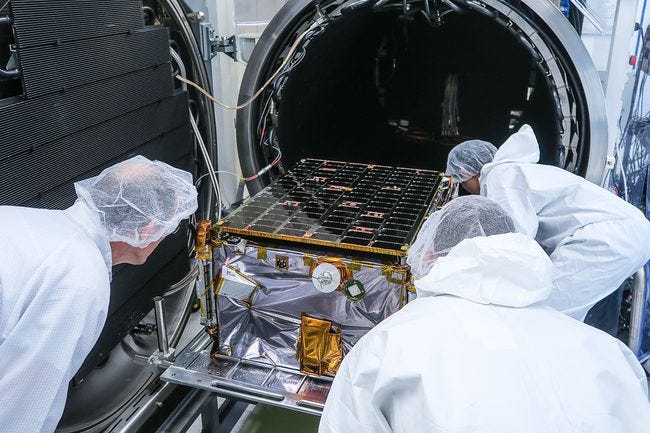
Arab Gulf Countries’ Space Ambitions and Investments Accelerating Rapidly
The Arab Gulf’s space ambitions are accelerating rapidly, with regional investment in satellites and space infrastructure projected to triple from $25 billion to $75 billion by 2032, according to Euroconsult (now Novaspace). Led by the UAE and Saudi Arabia, the Gulf Cooperation Council (GCC) countries are increasingly localizing their space value chain, moving beyond satellite procurement to manufacturing and launch capabilities. This shift is driven by both government security needs and commercial applications, particularly in Earth observation, where satellites provide critical data for disaster response, environmental monitoring, and infrastructure planning. The demand for high-resolution imaging and artificial intelligence-powered analytics has spurred partnerships such as the UAE-based Space42’s joint venture with Finnish satellite manufacturer Iceye, which aims to produce over 100 synthetic aperture radar satellites in the coming years. The falling cost of satellite production—now as low as $20 million per unit compared to $200 million a few years ago—is further fueling this growth. Oman is also positioning itself as a space hub, with plans for a dedicated space economic zone. The surge in interest across both state and private sectors underscores the Gulf’s commitment to establishing a self-sustaining space ecosystem, with regional players increasingly looking to build rather than buy space assets.
Prominent Indian Space Scientist Calls for Asian Space Agency That Includes Middle East Countries
Former Indian Space Research Organisation (ISRO) scientist S. Nambinarayanan has called for India to take the lead in establishing an Asian Space Agency (ASA), modeled after the European Space Agency (ESA), to foster regional collaboration in space exploration. Speaking at the Loyola Centenary Conclave, he emphasized that such an initiative could unify Asian countries, including the Philippines, Indonesia, Singapore, Japan, and Middle Eastern countries, in space missions, launch services, and tracking capabilities. He suggested that if China joined, it could even contribute to resolving geopolitical tensions, including the Sino-Indian border dispute. While acknowledging India's rapid advancements in space technology, he noted that the country has not experienced exponential growth since the 1990s, particularly in high-thrust liquid propulsion systems needed for deep space missions and human spaceflight. As India advances its Gaganyaan program, he highlighted the need for expertise in space medicine to protect astronauts from radiation and other hazards. Despite India's increasing satellite launch capabilities and Earth observation expertise, he stressed that financial resources and manpower remain critical challenges for the country's ambitions in space exploration.
Egypt to Inaugurate Africa’s First Space Agency at New Space Africa 2025
Egypt is set to officially inaugurate Africa’s first dedicated space agency during the New Space Africa 2025 conference, underscoring its leadership in the continent’s growing space sector. With Africa’s total space investments reaching $7.7 billion—only 1% of the global space economy—the new agency aims to enhance regional collaboration, innovation, and satellite capabilities. Currently, Africa has 22 space institutions and only 61 operational satellites, 13 of which belong to Egypt. Strategically located in New Cairo at 344 meters above sea level, the agency will serve as a hub for research, observation, and industry partnerships. The initiative, held under the patronage of Egypt’s Prime Minister, will position Egypt as a key driver of Africa’s space ambitions, fostering cooperation among industry leaders, investors, and policymakers to advance the continent’s role in global space activities.
New Board of Directors of Bahrain’s NSSA Convene First Meeting
Bahrain's National Space Science Agency (NSSA) convened its first board meeting under its new leadership, chaired by Sheikh Khalid bin Ali bin Jaber Al Khalifa, to review strategic initiatives, international collaborations, and the Kingdom’s expanding role in the global space sector. The board discussed Bahrain’s leadership in key international space organizations and assessed progress on the Al Munther satellite project, with its launch expected to coincide with Bahrain’s silver jubilee celebrations. The meeting also evaluated the agency’s 2024 strategic plan and performance indicators, reinforcing Bahrain’s commitment to strengthening its space capabilities and enhancing its global presence in the sector.
Azerbaijan’s Azercosmos Reports $1.5 Million Satellite Services Exports in January 2025
Azerbaijan’s Azercosmos reported $1.5 million in satellite and telecommunications service exports in January 2025, accounting for 69% of its total revenues, according to the latest Export Review by the Center for Analysis of Economic Reforms & Communications. The agency provided services to 88 companies across 36 countries, with Luxembourg, the UK, Egypt, Türkiye, Russia, Tanzania, and South Africa among the top markets. This highlights Azercosmos’ growing role in the global satellite communications sector, positioning Azerbaijan as a competitive provider of space-based services across multiple regions.
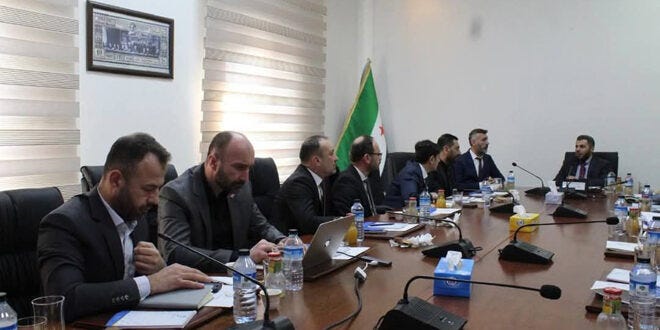
Syria in Talks With Turksat for Satellite Broadband Internet Services
Syria's Minister of Communications and Information Technology, Hussein Al Masri, met with a delegation from Turkish satellite operator Türksat to explore potential cooperation in satellite internet services. The discussions focused on enhancing Syria’s technological infrastructure and expanding communication capabilities, signaling an interest in leveraging satellite connectivity to improve broadband access. This engagement aligns with broader regional trends where governments are increasingly turning to satellite solutions to bridge digital divides and modernize telecom networks. The potential partnership could mark a significant step in Syria’s efforts to upgrade its communications sector through international collaboration.
Starlink Must Navigate Yemen’s Fractious National Politics
The introduction of Starlink in Yemen marks a transformative shift in the country's connectivity landscape, addressing long-standing challenges posed by damaged infrastructure and regulatory monopolies. Previously, satellite internet was limited to institutions, NGOs, and high-cost enterprise solutions via TeleYemen, leaving most households without access. However, after nearly two years of negotiations, Yemen’s internationally recognized government secured an agreement with SpaceX, officially launching Starlink in September 2024. The pilot program in Aden demonstrated a significant leap in internet speeds, from 10–12 Mbps on existing networks to over 140 Mbps via Starlink. While this development introduces much-needed competition and could drive improvements in local ISP services, regulatory and political hurdles persist. In Houthi-controlled areas, Starlink remains unauthorized, with concerns over security risks and its potential to bypass YemenNet’s control. Despite these challenges, Starlink's ability to provide high-speed, low-latency connectivity to remote areas presents a critical opportunity to bridge Yemen’s digital divide. If successfully scaled, it could revolutionize internet access for homes, schools, and businesses, potentially paving the way for other satellite providers like OneWeb to enter the market. However, its long-term viability will depend on affordability, regulatory acceptance, and security conditions.

Algeria’s Gypsum Deposits Provide Valuable Insights for Detecting Life on Mars
A new study examining microbial fossils in gypsum deposits on Earth is providing valuable insights for detecting potential ancient life on Mars. Researchers analyzed gypsum samples from Algeria’s Sidi Boutbal quarry—formed over five million years ago under conditions similar to Mars’ dried lake beds—using a spaceflight-compatible laser ablation ionization mass spectrometer. The study found fossilized sulfur-oxidizing bacteria preserved alongside dolomite and clay, a mineral combination that suggests microbial activity. Since gypsum is widely present on Mars and known for its high fossilization potential, these findings provide a methodological framework for biosignature detection in future Mars missions. However, distinguishing true biosignatures from abiotic formations remains a challenge, necessitating additional detection methods. The European Space Agency’s Rosalind Franklin rover, set to launch this decade, and NASA’s Perseverance samples—awaiting retrieval—could soon put these findings to the test, refining strategies for identifying ancient Martian life.
Be sure to catch up with space activities in the region in the next edition of Middle East Space Monitor’s space roundup!

